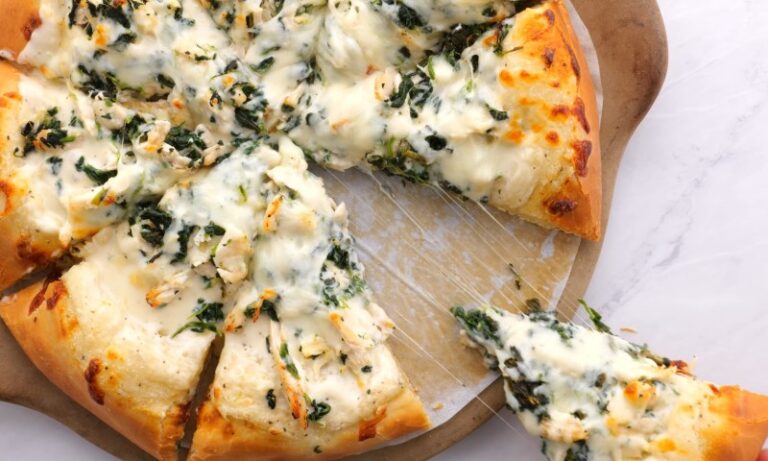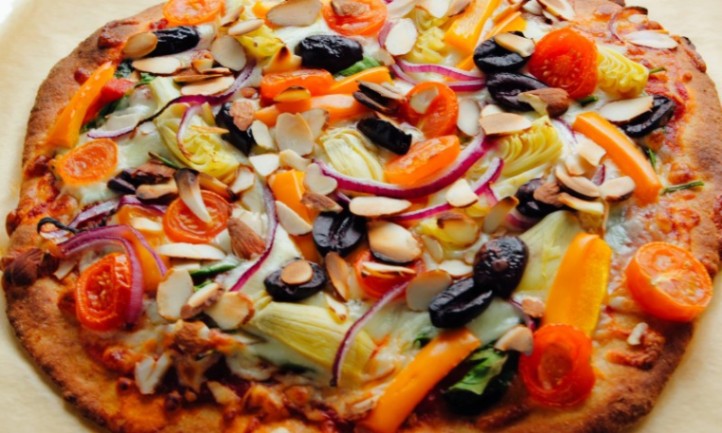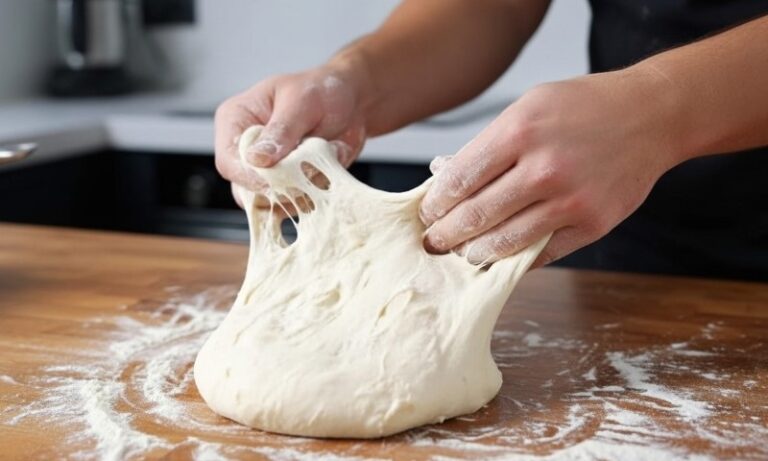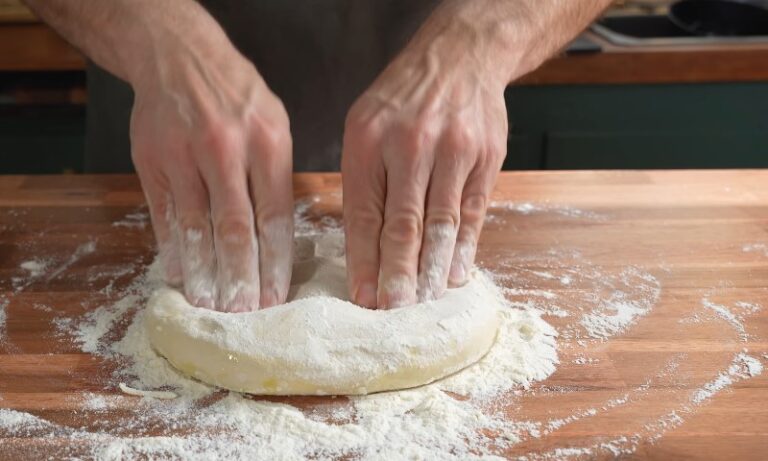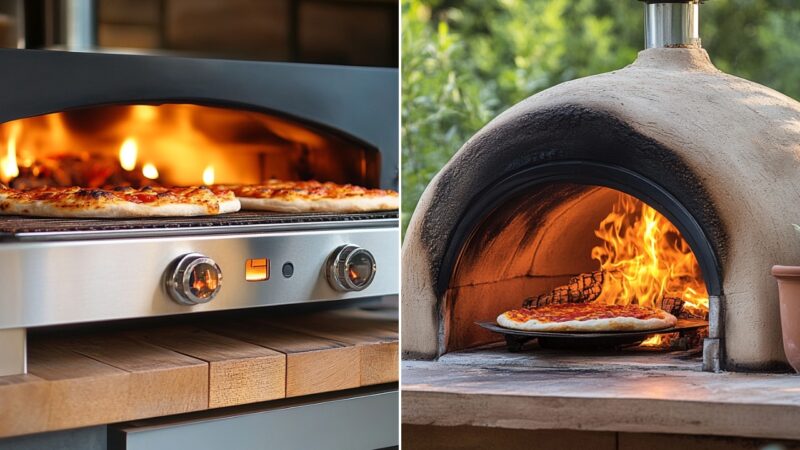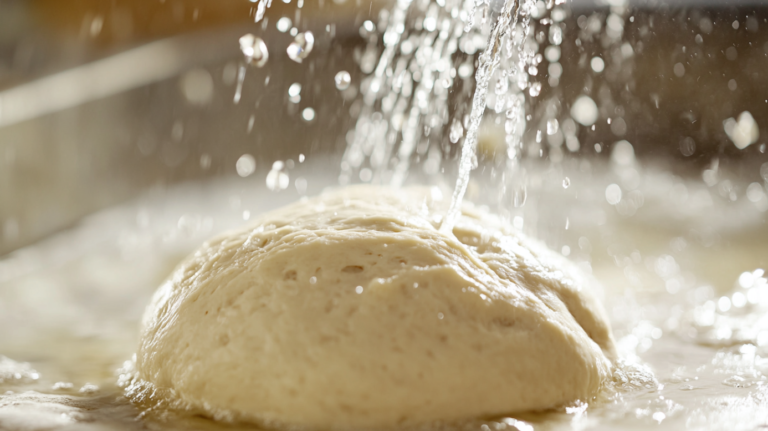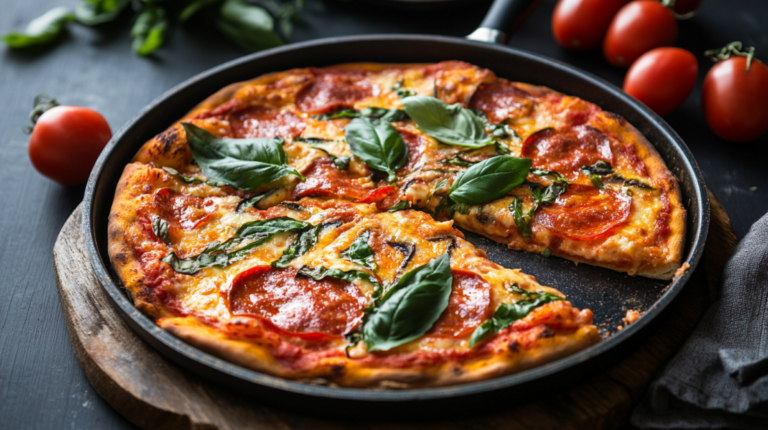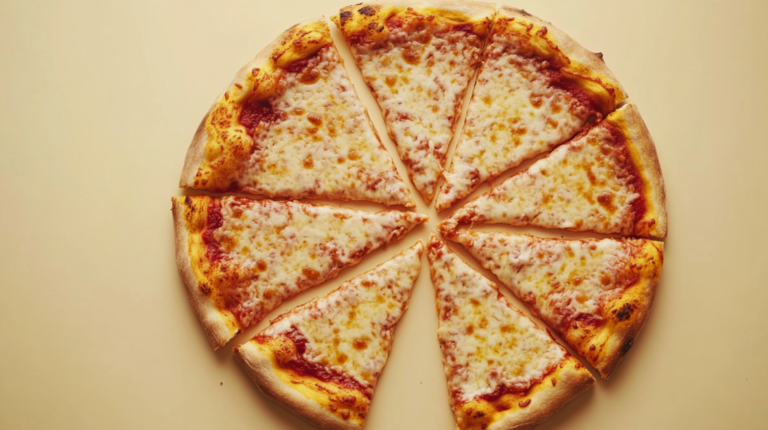Pizza ovens, whether wood-fired or propane, bring a unique flavor and experience to making your favorite pies.
Both types of ovens give you the flexibility to experiment with different recipes and cooking techniques, offering a fun and satisfying way to make pizzas at home.
Let’s talk about them in greater detail.
Table of Contents
TogglePreparing Your Pizza Oven
To make the best pizza, it is essential to properly prepare your pizza oven. This ensures that the oven reaches the right temperature and maintains an even heat distribution.
Preheating the Oven
Start by lighting the fire in your wood-fired pizza oven. Use small pieces of dry wood to build a strong base. Lighting the fire with fire lighters can save time. Once the fire is lit, allow it to burn until the dome turns clear.
For propane ovens, ignite the burner and set it to high. Let the oven run for about 15-20 minutes.
Always follow the manufacturer’s instructions for safety. Preheating ensures that your oven’s floor temperature is high enough to cook the pizza evenly.
Achieving the Right Oven Temperature
For the perfect pizza, aim for an oven temperature between 650-750°F (340-400°C). Use an oven thermometer to accurately measure the heat. The floor temperature should be close to the dome temperature for an even cook.
For wood-fired ovens, manage the fire carefully. Add more wood to increase heat or let it die down if it’s too hot. In propane ovens, adjust the burner to reach the desired temperature. Constantly monitor and adjust as necessary to maintain a stable range.
Keep an eye on both the dome and floor temperatures. This will help in achieving a perfectly cooked pizza without any burnt spots.
Crafting the Perfect Pizza
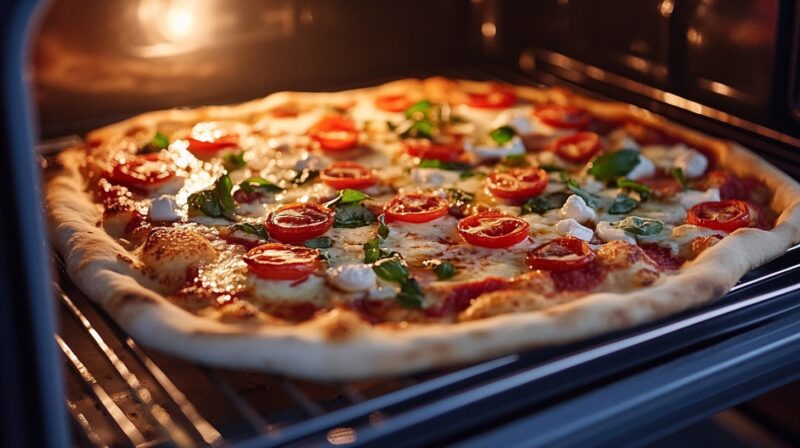
Creating a delicious pizza involves choosing high-quality ingredients, making the perfect dough, assembling with the right toppings, and mastering the use of pizza peels.
Choosing Quality Ingredients
To craft a perfect pizza, start with fresh ingredients. Use ripe tomatoes for your sauce or high-quality canned tomatoes. Fresh herbs, such as basil and oregano, add great flavor.
For the cheese, choose mozzarella or a mix of mozzarella and parmesan for a rich, melty texture.
Quality toppings are also key. Fresh vegetables, like bell peppers and onions, should be crisp and colorful. For meats, select high-grade pepperoni, sausage, or prosciutto. Experiment with unique ingredients like arugula, pesto, or sun-dried tomatoes for extra flair.
Creating the Ideal Dough
A great pizza begins with excellent dough. Use strong bread flour or 00 flour for a crispy crust. Mix flour, water, yeast, and salt according to an outdoor pizza oven dough recipe.
Allow the dough to ferment for at least 24 hours in the fridge. This fermentation process enhances flavor and texture.
Knead the dough until smooth and elastic. Divide it into balls weighing about 250 grams each for individual pizzas. Let them rest at room temperature before stretching.
Assembling Your Pizza

Start by preheating your oven and cooking stone to the right temperature.
Stretch your dough into a thin round, about 12-14 inches. Use a floured pizza peel to transfer the dough to a clean surface. Spread a thin layer of pizza sauce, leaving a small border for the crust.
Add mozzarella cheese evenly across the pizza. Then, arrange your chosen pizza toppings, taking care not to overload. Fresh herbs, like basil, can be added after baking to preserve their flavor.
Mastering the Use of Pizza Peels
Using pizza peels correctly is crucial for a perfect bake. A metal pizza peel is ideal for transferring the assembled pizza into the oven. Lightly flour the peel to prevent sticking. Slide the peel back and forth to ensure the dough moves freely.
Once the pizza is in the oven, monitor it closely. Use the peel to rotate the pizza halfway through cooking for an even bake. A wooden pizza peel can help remove the pizza without damaging the crust. Practice will make this process smoother over time.
Choosing Your Pizza Oven
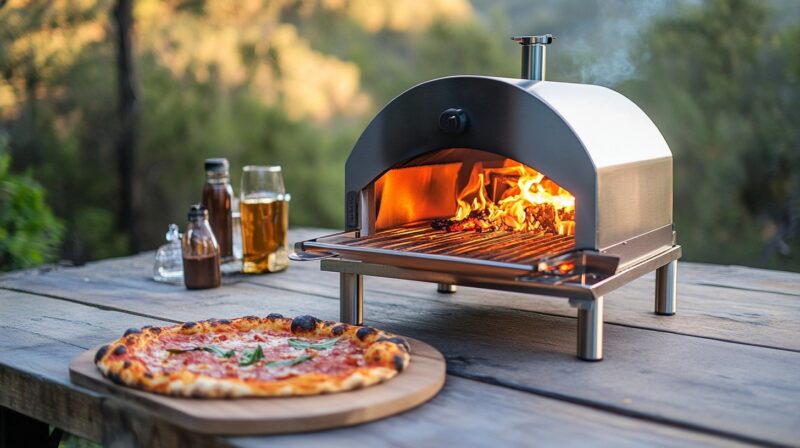
When selecting a pizza oven, it’s crucial to understand the types of ovens available and the factors that will influence your decision.
Types of Pizza Ovens
Wood-Fired ovens use wood as fuel and are popular for their ability to reach very high temperatures, which is perfect for creating crispy, flavorful pizzas. They are usually built as brick ovens and can be quite large, often becoming a permanent part of your backyard.
Propane ovens, like the Ooni Koda, are more portable and easier to set up than wood-fired ovens. They heat up quickly and are simple to operate, making them a good choice for beginners or those with limited space.
Tabletop Pizza are smaller and more compact, designed for use on a table or countertop. They can be either wood-fired or propane, and are great for those who want to make pizzas at home without a permanent installation.
Factors to Consider
- Space: If you have a large backyard, a traditional wood-fired brick oven might be suitable. For smaller spaces, propane or tabletop pizza ovens are more practical.
- Budget: Wood-fired brick ovens can be expensive due to construction costs. Propane ovens and tabletop options are generally more affordable and offer good performance.
- Ease of Use: Propane ovens are straightforward to use and maintain. Wood-fired ovens require more skill to manage the fire and maintain the right temperature.
- Flavor: Wood-fired ovens impart a unique smoky flavor to the pizza, which many people enjoy. Propane ovens may lack this characteristic but offer consistent cooking results.
- Portability: If you need an oven that can be moved easily, options like the Ooni Koda are ideal. They are lightweight and can be transported to different locations without much hassle.
- Cooking Time: Wood-fired ovens take longer to heat up but can cook pizzas very quickly. Propane and tabletop ovens heat up faster and can still produce a high-quality pizza.0
Considering these aspects will help you choose a pizza oven that fits your needs and lifestyle.
Cooking and Cleaning Procedures
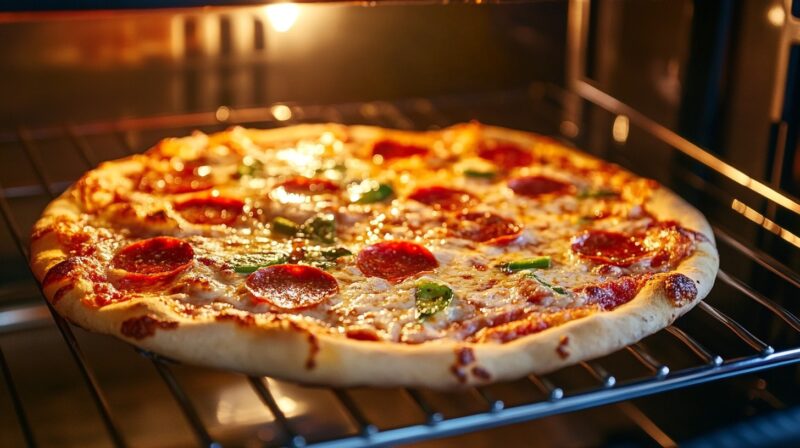
You need to know the right methods for baking your pizza perfectly and keeping your oven clean. Following these procedures ensures tasty results and a long-lasting oven.
Baking Your Pizza to Perfection
When the oven reaches the right temperature, usually around 700-1,000°F for wood-fired and 500-700°F for propane, it’s time to bake. These high temperatures are ideal for Neapolitan-style pizza.
Prepare your dough and toppings in advance. Stretch the dough to about 12-14 inches. Lightly flour a pizza peel to prevent sticking.
Spread your sauce, add cheese, and toppings, leaving a small border for the crust. Carefully transfer the pizza to the oven using the peel.
Cooking time varies between 90 seconds to 3 minutes in a wood-fired oven. Rotate your pizza halfway through to ensure even cooking. For propane ovens, expect a slightly longer bake time, around 5-7 minutes.
Maintaining Your Pizza Oven
Proper maintenance is key to an efficient and long-lasting oven. For wood-fired ovens, allow the fire to burn down, and use a metal brush to clean ash and food residue from the floor.
Check if the dome is clear. The oven should cool gradually. Do not use water as it can crack the oven. Sweep the ash into an ash container once it is fully cooled.
For propane ovens, shut off the propane and let the oven cool. Remove and clean the stone with a brush. Wipe the oven’s interior and exterior surfaces with a damp cloth.
Regular cleaning will prevent ash buildup and keep your pizzas tasting their best. Always follow the manufacturer’s instructions for specific cleaning methods.
The Bottom Line
Using a pizza oven, whether wood-fired or propane, can elevate your pizza-making experience.
By following these steps, you can enjoy delicious, homemade pizza with minimal fuss.

